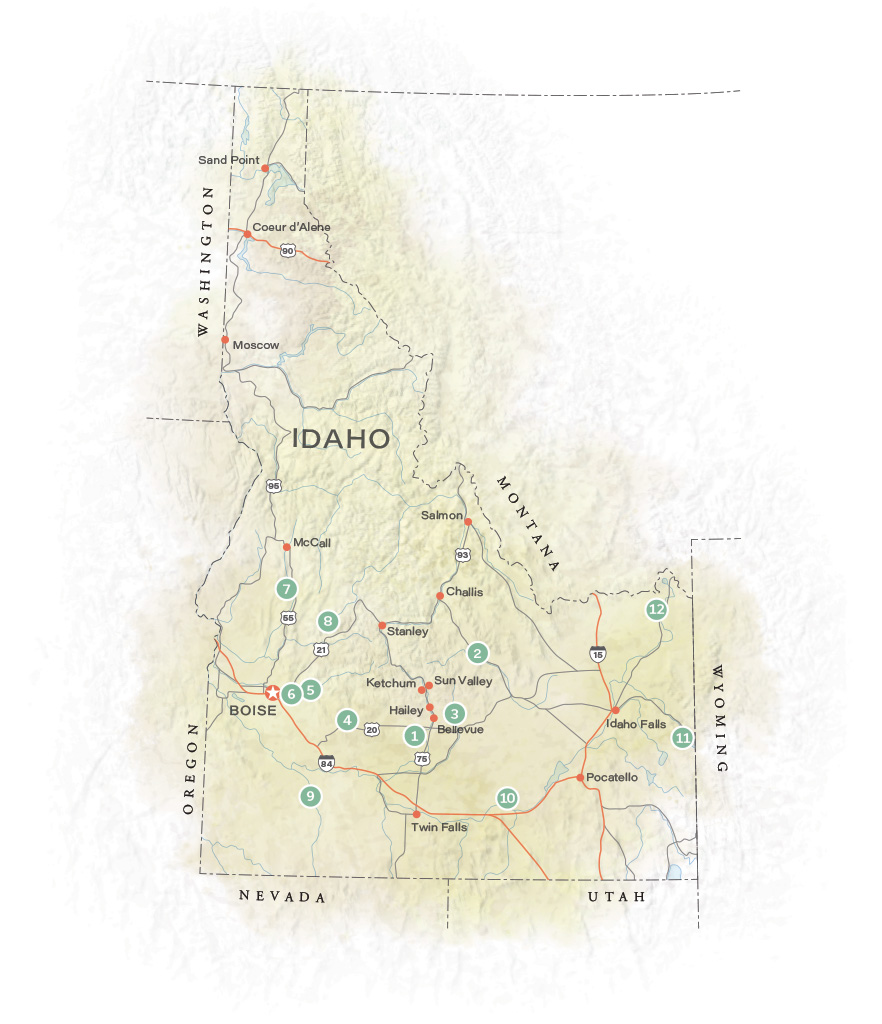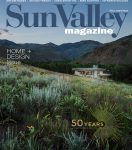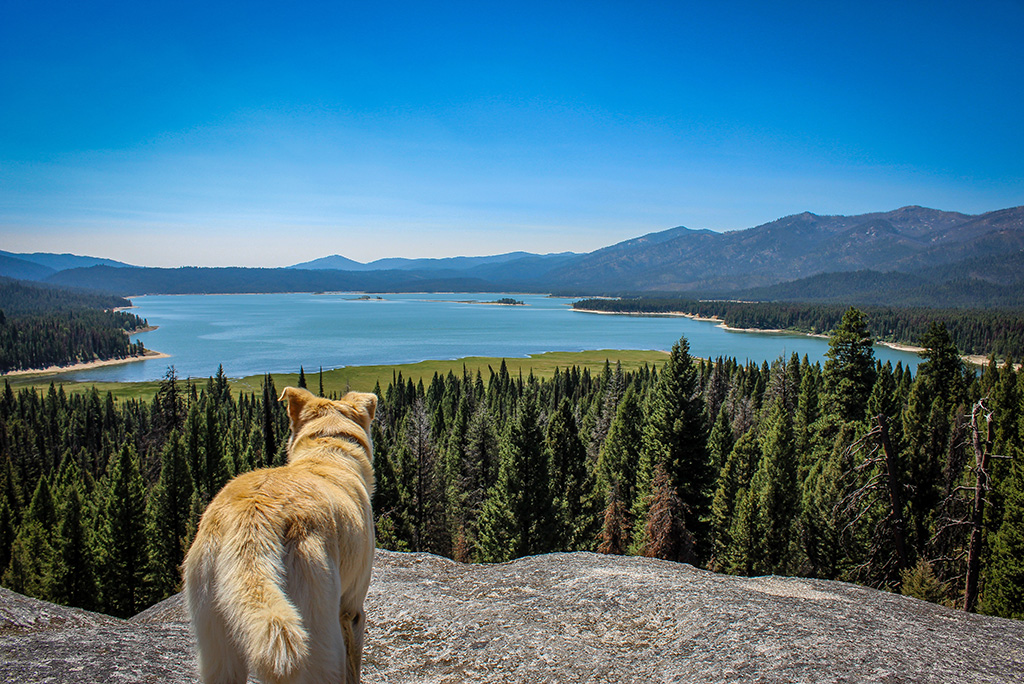Reservoirs have been an essential part of human existence for thousands of years, with the oldest known dam—the Jawa Dam in what is now Jordan—dating to around 3,500 BC (the Early Bronze Age). Located in what is one of the driest areas of the Black Desert, the local inhabitants of the town would not have been able to survive the summer season without this system of dams and reservoirs designed to divert and store water from winter floods, providing critical water for irrigating crops and drinking water for the settlement.
Dams, and the reservoirs they create, also serve other purposes, being used for electricity generation, to control seasonal floods on larger rivers and to provide irrigation water for agriculture. In Idaho, many reservoirs are also used for recreation—boating, fishing, paddle boarding, camping, hunting, hiking and biking the shores around the bodies of waters created from containing some of Idaho’s over 93,000 miles of rivers and streams. And while many of Idaho’s smaller reservoirs (Mackay Reservoir, just 56 miles northeast of Ketchum, and Magic Reservoir, 23 miles south of Hailey) date back to the early 1900s, many of Idaho’s larger dams and reservoirs (American Falls Reservoir, Palisades Reservoir or Anderson Ranch Reservoir) were part of America’s era of large-scale hydroelectric dam building from the 1930s through the 1960s—symbolically commemorated with the dedication of Hoover Dam in 1935.
Many of Idaho’s larger reservoirs are easily accessible from the Wood River Valley and are worth exploring for the seasonal recreation opportunities available—camping, boating, fishing, water skiing, wind surfing, canoeing, paddle boarding, swimming, hiking, hunting, ice fishing, Nordic skiing, wildlife viewing, picknicking, and more. Here is a rundown of some of Idaho’s most accessible reservoirs:

1. Magic Reservoir
Year Built: 1910
Capacity: 191,500 acre-feet
River System: Big Wood River
Location: Blaine and Camas Counties
Dam Type: Earthfill
Owner: Magic Reservoir Hydroelectric, Inc.
Uses: Boating, motor boating, fishing, camping, rv camping, ice fishing, and hunting
Fun Fact: Black Magic Canyon (north of Shoshone) was created as the Big Wood River carved through 800,000-year-old basalt lava flows.
2. Mackay Reservoir
Year Built: 1918
Capacity: 44,400 acre-feet
River System: Big Lost River
Location: Custer County
Dam Type: Earthfill
Owner: Big Lost River Irrigation District (town of Mackay)
Uses: Boating, motor boating, fishing, camping, ice fishing, and hunting
3. Little Wood Reservoir
Year Built: 1939
Capacity: 30,000 acre-feet
River System: Little Wood River
Location: Blaine County
Dam Type: Earthfill
Owner: U.S. Bureau of Reclamation
Uses: Boating, fishing, camping, ice fishing, and hunting
4. Anderson Ranch Reservoir
Year Built: 1950
Capacity: 450,200 acre-feet
River System: South Fork of the Boise River
Location: Elmore County
Dam Type: Earthfill
Owner: US Bureau of Reclamation
Uses: Boating, motor boating, fishing, camping, rv camping, ATV riding, hiking, and hunting
Fun Fact: When completed in 1950, it was the tallest dam of its type in the world (an earthfill dam 456 feet tall).
5. Arrowrock Reservoir
Year Built: 1915
Capacity: 272,200 acre-feet
River System: Boise River
Location: Boise and Elmore Counties
Dam Type: Concrete Arch
Owner: US Bureau of Reclamation
Uses: Boating, fishing, camping and hunting
Fun Fact: Built upstream of the Lucky Peak Dam and Reservoir. Designated a National Historic Civil Engineering Landmark by the American Society of Civil Engineers in 2016.
6. Lucky Peak Reservoir
Year Built: 1955
Capacity: 293,200 acre-feet
River System: Boise River
Location: Ada, Boise and Elmore Counties
Owner: US Army Corps of Engineers
Dam Type: Earthfill
Uses: Boating, motor boating, fishing, camping and hunting
7. Lake Cascade (formerly Cascade Reservoir)
Year Built: 1948
Capacity: 693,200 acre-feet
River System: North Fork of the Payette River
Location: Valley County
Dam Type: Earthfill
Owner: US Bureau of Reclamation
Uses: Boating, motor boating, fishing, camping, ice fishing, and hunting
Fun Fact: The lake boats perch, trout, smallmouth bass, Kokanee salmon and Coho salmon
8. Deadwood Reservoir
Year Built: 1931
Capacity: 161,900 acre-feet
River System: Deadwood River
Location: Valley County
Dam Type: Concrete Arch
Owner: US Bureau of Reclamation
Uses: Boating, motor boating, fishing, camping and hunting
9. C.J. Strike Reservoir
Year Built: 1952
Capacity: 247,000 acre-feet
River System: Bruneau and Snake Rivers
Location: Owyhee and Elmore Counties
Dam Type: Earthfill
Owner: Idaho Power
Uses: Boating, motor boating, fishing, camping and hunting
Fun Fact: Ruts from the Oregon Trail can still be seen by hiking the area
10. Lake Walcott
Year Built: 1906
Capacity: 210,200 acre-feet
River System: Snake River
Location: Cassia and Minidoka Counties
Dam Type: Earthfill /Concrete
Owner: U.S. Bureau of Reclaimation
Uses: Boating, motor boating, fishing, camping and hunting
Fun Fact: The Minidoka dam at Lake Walcott was the first Reclamation Service project in Idaho, marking it as the first federal power plant in the northwest when the power plant was completed in 1909. Bird Island and the Minidoka National Wildlife Refuge offer great birding and wildlife viewing.
11. Palisades Reservoir
Year Built: 1957
Capacity: 1,400,000 acre-feet
River System: Snake River
Location: Bonneville County
Dam Type: Earthfill
Owner: US Bureau of Reclamation
Uses: Boating, motor boating, fishing, camping and hunting
Fun Fact: The dam and power station (which can potentially generate 176.5MW of electricity) was listed on the National Register of Historic Places in 2018.
12. Island Park Reservoir
Year Built: 1939
Capacity: 135,205 acre-feet
River System: Henrys Fork of the Snake River
Location: Fremont County
Dam Type: Earthfill
Owner: US Bureau of Reclamation
Uses: Boating, motor boating, fishing, camping, wildlife viewing, and hunting


